Home >Backend Development >Golang >An article to help you understand the basics of Go language byte types
An article to help you understand the basics of Go language byte types
- Go语言进阶学习forward
- 2023-07-20 14:40:241763browse
Review of strings above
In the above article, we learned about the string type.
In Go language, the string type is basic type, which is stored in the stack and has the following structure .
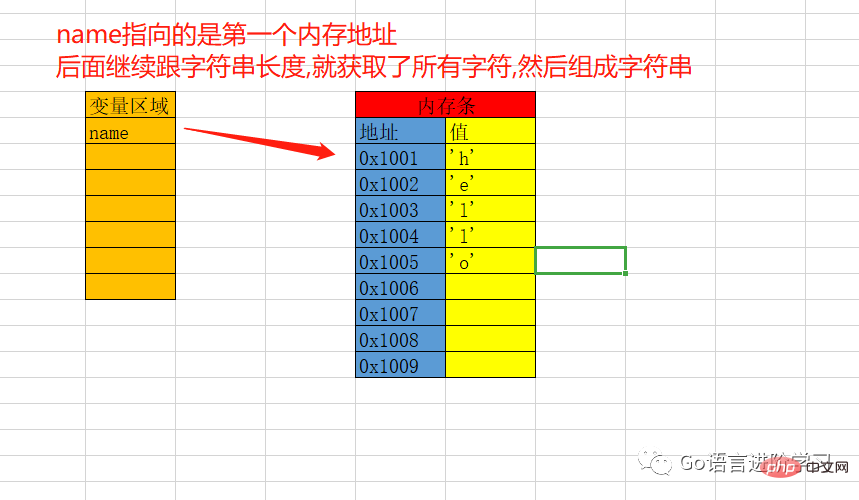
As you can see, in Go, a string actually points to a continuous memory address, and the length is recorded, and the reading is done in one go.
So, as shown in the picture above, what are the names of the letters stored in the memory? ? ?
byte and rune types
The string is composed of characters, In turn, it is also a string of characters spliced together into a string, and each character is called Byte. bytes occupy
1 byte size . Only letters and punctuation marks can be stored. And so on, Chinese cannot be saved. Of course, what should I do if I save Chinese??? There is a
rune in Go, and byte is similar, the essence is the same as byte, except runeOne occupies 4 bytes.
Use utf-8 Encoding can save Chinese and various languages.
Therefore, try to use the rune type when processing Chinese.
Define a (byte) byte type variable
Character Wrap it in single quotes '.
Code
package main
import "fmt"
func main() {
var a byte = 'a'
fmt.Println(a)
}
Children, do you have many questions??? Why is it 97

reason
byte代表的是一个ASCII码的一个字符,同理,rune可以理解为是byte的一个超集,向下兼容byte。
package main
import "fmt"
func main() {
var a rune = 'a'
fmt.Println(a)
}结果:
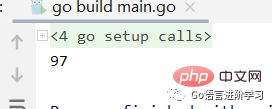
但是rune里面可以写中文,byte不行。
byte不能存中文
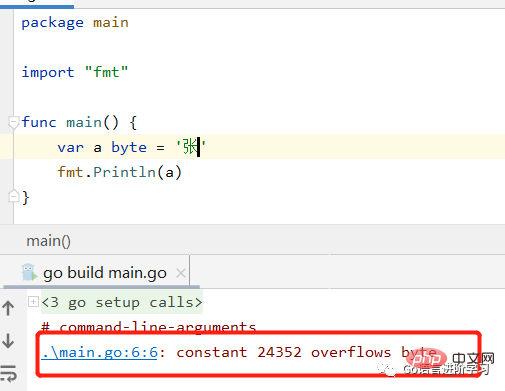
rune可以存中文
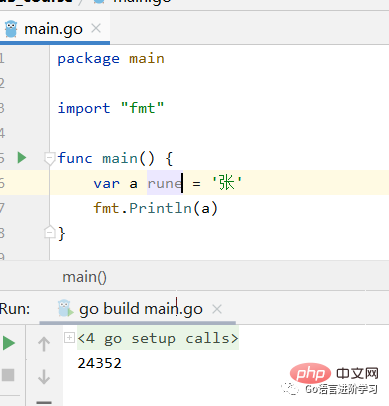
发现了吗,打印的竟然是一个数字?这是为啥???
就拿字母a来说,其实打印的是ASCII对应的数字,打印的是他的十进制。
同理,字符张也是,这里就不做例子了,因为utf-8表太大了。
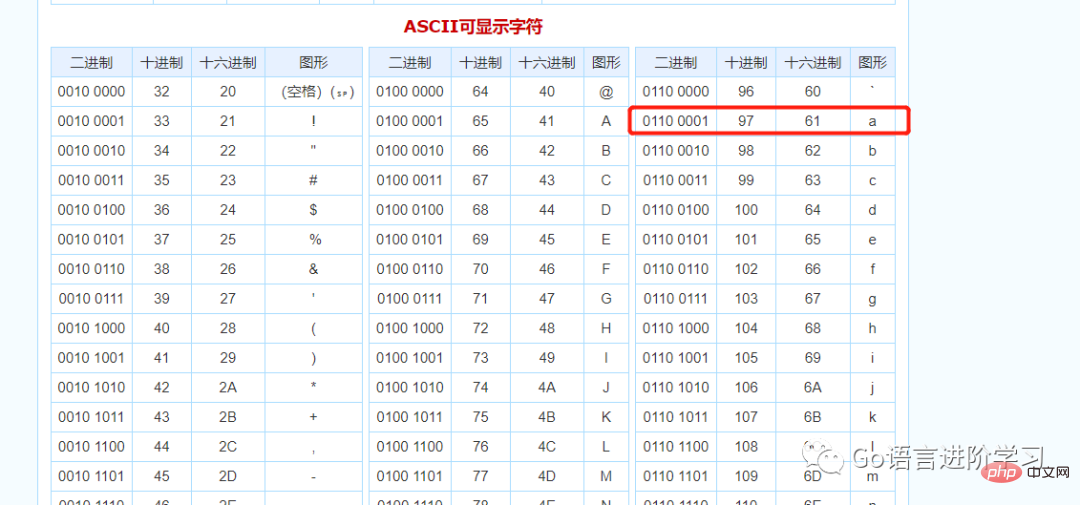
遍历字符串
方式一
package main
import "fmt"
func main() {
s := "我是法外狂徒,张三,hahaha"
for _, r := range s {
fmt.Printf("%c \n",r)
}
}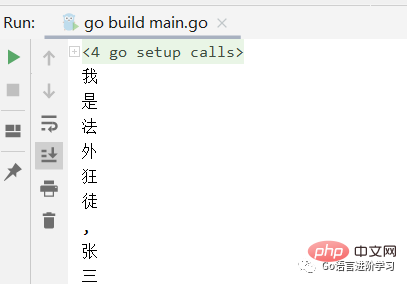
方式二
package main
import "fmt"
func main() {
s := "我是法外狂徒,张三,hahaha"
for i := 0; i < len(s); i++ {
//中文会乱码,不推荐
fmt.Printf("%c \n",s[i])
}
}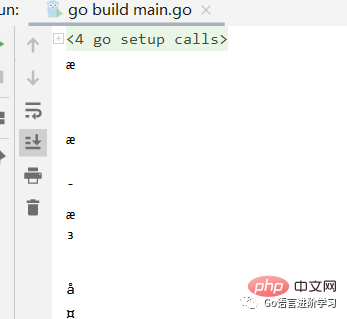
修改字符串
同理,字符串相当于是字节列表组成的,是不能直接修改的,想要直接修改需要打散成字节列表才行。
package main
import "fmt"
func main() {
//只有英文的情况下
s1 := "hello world"
var s1_byte_list = []byte(s1) //打散成字符列表
s1_byte_list[6] = 'F' //修改下表为6的字符为F
s1 = string(s1_byte_list) //打散的字符列表在组装成字符串
fmt.Println(s1) //输出 hello 6orld
//带有中文的情况
s2 := "天空好像下雨,我好像住你隔壁vay"
var s2_rune_list = []rune(s2) //打散成utf-8字符列表
s2_rune_list[5] = '雪' //修改下表为5的字符为雪
s2 = string(s2_rune_list) //打散的utf8字符转字符串
fmt.Println(s2) //输出 天空好像下雪,我好像住你隔壁
}The above is the detailed content of An article to help you understand the basics of Go language byte types. For more information, please follow other related articles on the PHP Chinese website!

